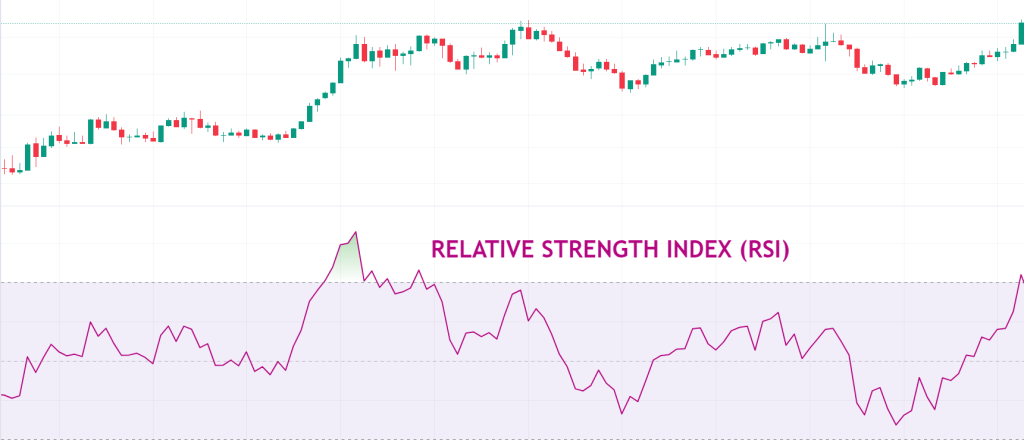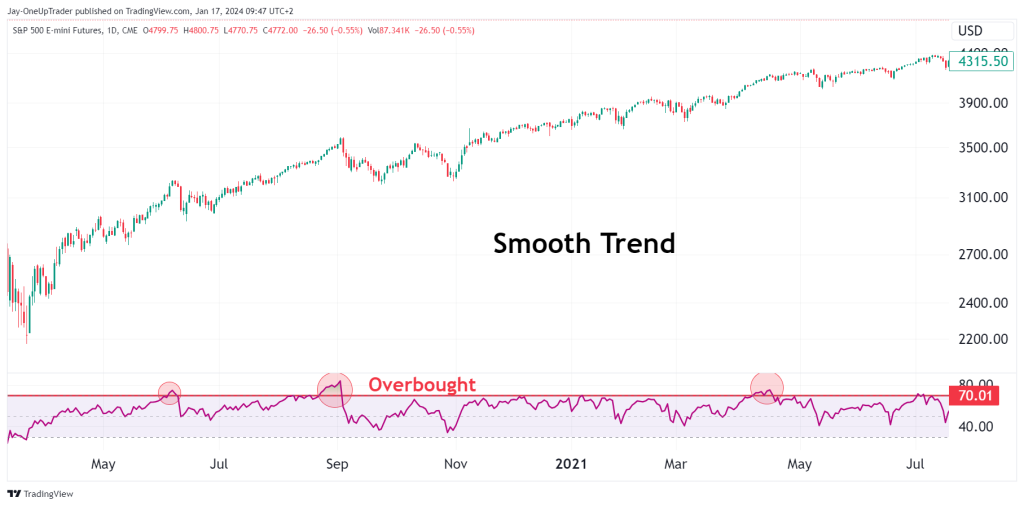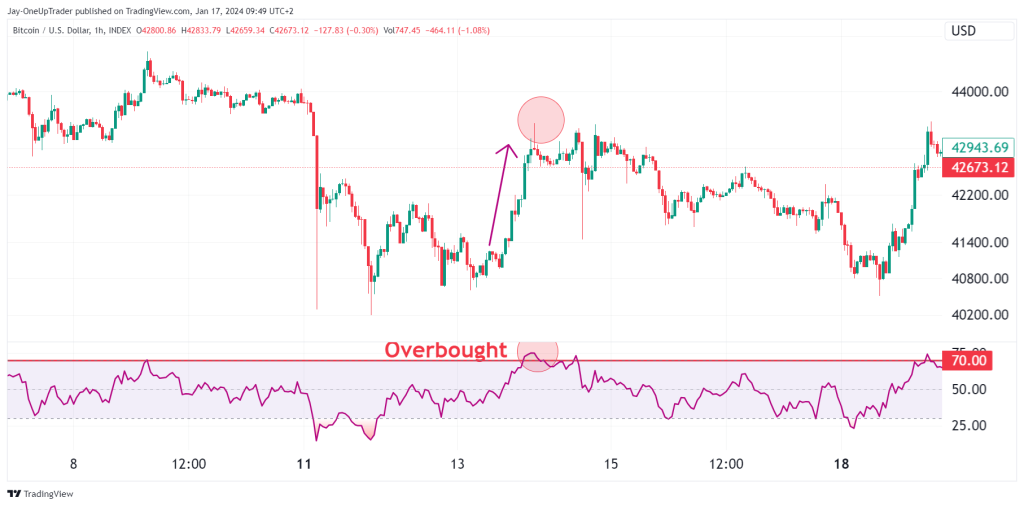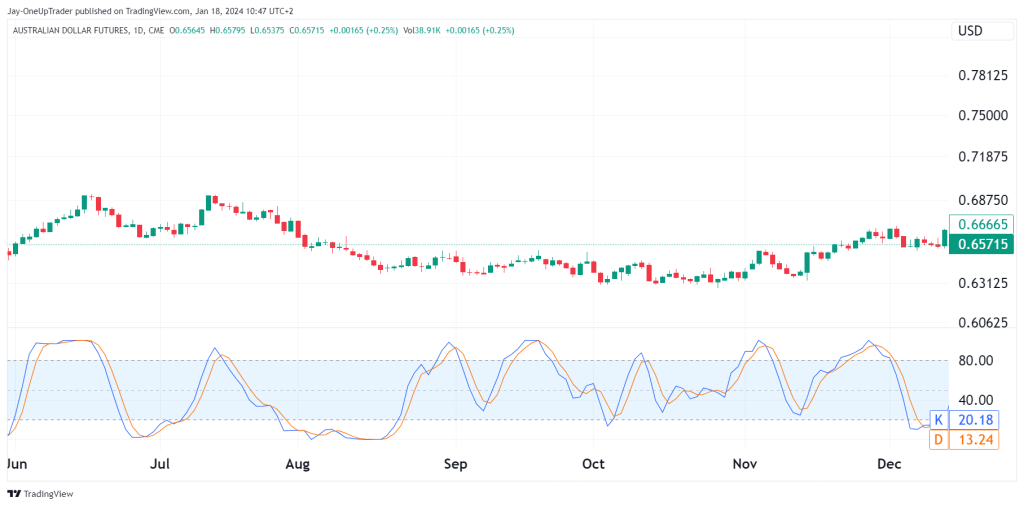Introduction
As a trader, having the right indicators in your toolbox can mean the difference between successful trades and costly mistakes. One of the most powerful and versatile tools available is the relative strength index (RSI indicator). Virtually every trader knows about the RSI, but are you using it to its full potential?
In this guide, we will explore the relative strength index in a practical way with actionable insights you can immediately apply in your own trading. You’ll learn the secrets of the RSI indicator, including its meaning, calculations, and settings, so you can customize it perfectly for your strategy. We’ll unpack advanced techniques for combining it with other indicators and using it across different asset classes.
By the end, you’ll have a better understanding of the RSI indicator’s capabilities, how to read it correctly, RSI strategies, and how you can incorporate it into your own trading plan. We also include an in-depth, fully-built RSI trading strategy video at the end.
What is the RSI indicator?
The Relative Strength Index (RSI) is one of the most widely used and versatile technical indicators in modern-day markets. Developed by J. Welles Wilder Jr. in the late 1970s, the relative strength index has stood the test of time and remains a staple analytical tool for traders across all financial markets.
At its core, RSI offers a window into market psychology by measuring the magnitude and speed of price movements. The momentum captured by relative strength index data provides invaluable insights into the underlying supply and demand dynamics. Traders use its signals to identify potential overbought or oversold conditions, anticipate trend reversals, fine-tune entry and exit levels, and much more.
While the relative strength index indicator gained traction after its introduction in Wilder’s influential 1978 book, “New Concepts in Technical Trading Systems,” its adoption has steadily grown over the decades. From early pioneers experimenting with RSI signals to today’s technically savvy traders deploying the relative strength index in sophisticated ways, the indicator has earned its place as a core component of robust trading strategies.

How the RSI indicator is calculated
The calculation behind the RSI relative strength index is straightforward yet insightful. It involves taking the average gain and average loss over a set lookback period, typically 14 days, and plugging the values into a simple formula.
Relative Strength Index Formula:
RSI = 100 – (100 / (1 + RS))
Where RS is the relative strength ratio, which is the average gain divided by the average loss over the lookback period.
This results in a normalized oscillator that fluctuates between 0 and 100. A higher RSI suggests stronger upside momentum, while lower readings indicate downward momentum.
Let’s walk through an example. If a futures contract’s 14-day average gain is $2 and its average loss is $1, the RS would be 2. This gives us an RSI of 66.67, reflecting relatively strong upward momentum. As you can see, the RSI indicator formula is not complicated, which is one reason it has been such a popular indicator for so long. When indicators become too complex, it is a red flag for traders.
RSI Indicator Explained
The real mastery of RSI comes from interpreting its signals effectively. Readings above 70 are considered overbought, signaling potential exhaustion of upside momentum. Readings below 30 indicate oversold conditions ripe for a bounce. However, these thresholds are not definitive.
It also comes down to other factors, one of which is the price action prior to or at the time the RSI went into overbought territory. If the chart resembles a swift ‘pole-like’ move with little to no pullbacks and the RSI indicator signals overbought, that is a more reliable overbought signal than if there is a smooth long-term trend. The result of a smooth trend that sees the relative strength index go overbought may just be a small retracement in the short term, but the trend continues or could just be a false signal altogether. See the charts below for an accurate example of this.


Strategies for Using the Relative Strength Index
The relative strength index is a versatile momentum oscillator that can provide valuable trading signals when used thoughtfully. However, blindly following RSI signals without context can lead to poor results. Here are some expert tips for effectively incorporating RSI indicator analysis into your overall trading strategy:
- Use RSI overbought and oversold readings to identify potential turning points in the market. But before entering or exiting trades based solely on RSI levels, consider the broader price action and structure. For example, in strong uptrends, RSI may remain elevated for long periods above 70. Acting only on overbought RSI signals here could mean exiting prematurely.
- Keep an eye out for divergence between RSI and price to anticipate potential reversals early. Divergence, where price reaches new highs, but the RSI fails to confirm, often precedes major trend changes. Combining RSI divergence signals with other indicators can help validate these high-probability reversal setups. (more on this later).
- Don’t be afraid to tweak the standard 14-day RSI lookback period. A shorter period, like 7 days, will make the RSI indicator signal more sensitive to recent price swings. A higher period, like 21 days, will smooth out RSI fluctuations. Adjust the RSI indicator settings to match your trading timeframe and objectives.
- Keep in mind the RSI indicator behaves differently across trending versus range-bound markets. Expect to see extended overbought/oversold readings that can persist for long periods in strongly trending markets. RSI works best when markets are trending.
Always remember that no matter what indicator or system you employ, risk management and a solid plan will still be the most important things to master in trading.
How to use the RSI indicator
At its core, the RSI indicator is used to identify potential overbought and oversold conditions in the market. However, rather than just blindly relying on these generic overbought/oversold levels, traders should dig deeper into RSI signals. For instance, in a strong uptrend, the RSI may remain elevated above 70 for an extended period, so going short simply based on overbought levels could lead to premature exits.
Traders should utilize overbought RSI readings to anticipate potential exhaustion moves, where the uptrend pauses or pulls back briefly before potentially resuming. Similarly, oversold levels below 30 can signal an asset being unduly oversold, making it ripe for a bounce back up. The key is using the relative strength index in the context of the larger price swings and market structure rather than just reacting to generic overbought/oversold thresholds.

Stochastic RSI Indicator
The Stochastic RSI combines the Relative Strength Index and Stochastic Oscillator. It applies the Stochastic formula to RSI values rather than just price data. The end result is an oscillator that fluctuates between 0 and 1. A Stochastic RSI reading above 0.8 is seen as overbought, while below 0.2 is oversold.
The key benefit of Stochastic RSI is that it can identify overbought and oversold conditions earlier than regular RSI. By smoothing out RSI values and applying stochastic analysis, traders can spot tops and bottoms as momentum starts shifting sooner. The Stochastic RSI is more sensitive than the standard RSI, better suited for volatile markets. Used together, Stochastic RSI can provide early reversal signals while regular RSI confirms with divergences, but the best RSI indicator for you will come down to the strategy you employ and your trading plan.

How to trade RSI divergence
RSI divergence is one of the most powerful signals provided by the Relative Strength Index indicator. It occurs when the price of an asset makes a new high or low that is not confirmed by RSI, signaling a potential reversal ahead. Here are some key guidelines for trading RSI divergence effectively:
In an uptrend, focus on the highs of both price and RSI – a bearish divergence forms when price makes a higher high while RSI forms a lower high. This suggests waning upside momentum that could lead to a trend reversal.

The opposite applies in downtrends – a bullish divergence forms when price makes a lower low, but the relative strength index makes a higher low, hinting at fading downward momentum.

How To Use RSI Indicator With Correct Rules:
Only trade divergence that starts above 70 or below 30 RSI levels. Divergence that forms within the neutral zone between 30-70 is less statistically significant. Also, ignore divergence in range-bound markets at all times – they are only effective when trading a defined trend.
When RSI divergence is identified in an uptrend, it signals potential exhaustion of buying pressure, not necessarily an outright bearish reversal. Similarly, RSI bullish divergence in a downtrend indicates waning selling momentum but not guaranteed upside. This means RSI divergence could simply be traded as a possible exit strategy instead of an entry strategy.
Beware of false divergence where price continues trending strongly after a divergence. For example, if a bearish RSI divergence forms but then the RSI breaks out to new highs above 70, it invalidates the divergence signal.
RSI divergence can provide high-probability signals anticipating trend reversals. However, proper implementation requires filtering for quality setups, combining with other analysis techniques, and managing trades prudently based on price action. Mastering the nuances of RSI divergence this way helps translate them into trading success.
RSI indicator strategy
The RSI indicator can be very powerful when used in conjunction with trading indicators. In this video, we explain a full relative strength index system combined with the Fibonacci moving average indicator.
Limitations of the RSI Indicator
Is RSI a good indicator overall? While undoubtedly useful, the relative strength index does have some drawbacks traders should be mindful of:
- As a lagging indicator, RSI may not capture the latest price moves and sometimes may seem out of sync with the market, especially if not understood correctly.
- Overbought/oversold readings can persist for a long time in strongly trending markets.
- Sudden sharp price changes can cause false oversold or overbought readings that revert quickly back to the trend.
- Divergence doesn’t always result in reversals. Other factors need to align for divergence to play out.
- RSI can whipsaw in choppy, range-bound markets, making signals less actionable.
Conclusion
The relative strength index indicator is a valuable momentum tool that can reveal insights into market psychology. But it should be blended into a trading system that involves other indicators, rules, and technical analysis methods. With proper application and realistic expectations, the RSI can assist traders in making clear, well-thought-out decisions. Though not infallible, it remains one of the most versatile indicators in the technical trader’s toolbox.





